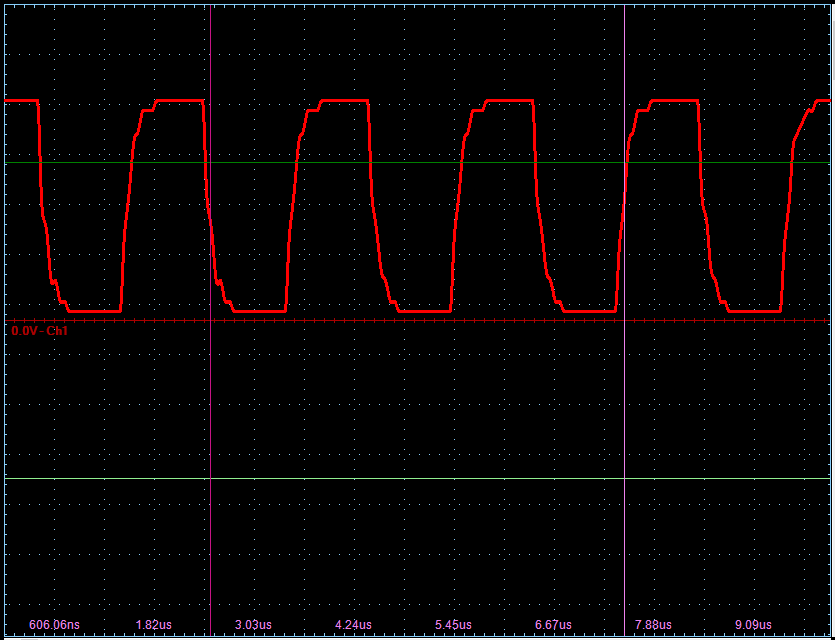It's very hard to say whether your estimation is right without knowing more about the system and the input signal. Looking at the rise and fall times it seems reasonable by eye, but if you want a good estimation of bandwidth, it makes much more sense to use a sinusoid waveform rather than a square one. With the square input your effectively checking the slew rate, but you can't be sure how much of the slew rate limiting is happening because of your source and how much is happening because of the scope.
By sweeping the frequency of a sine input, you should be able to monitor the frequency at which the displayed amplitude drops by 3dB (voltage amplitude becomes \$1/\sqrt{2}\$ ), which will give your -3dB corner frequency. You will also be able to measure the rolloff if you're so inclined, this will depend on how you have designed the input stage of your scope.
You say you have no specialized equipment, so assuming you don't have a sinusoid function generator, I would suggest building something like a Wien Bridge Oscillator. This will give you a neat sinusoid source, with only a few components. By changing the resistor values, you can get different frequencies for your sweep. If you don't have a small low voltage bulb, there are other designs which don't need it (you lose a bit of sine linearity though).

